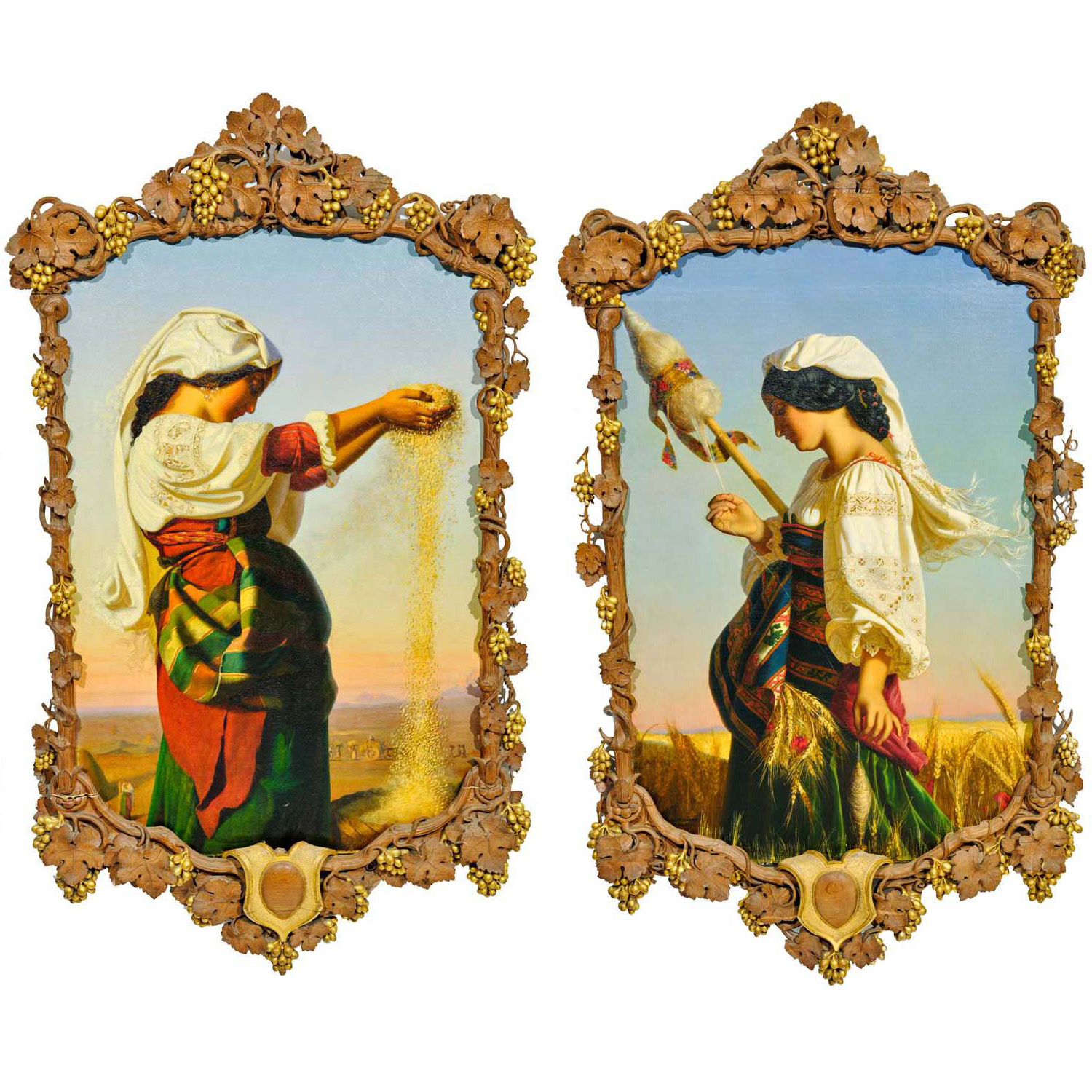On October 2, 2024, PIASA will auction two paintings by the master Rudolf Lehmann during its sale An Timeless Elegance: From a Private Collection.
The paintings, inspired by the charming peasant women of Latium, almost constitute a genre in itself in 19th-century painting and were highly sought after by collectors. Initiated by Bartolomeo Pinelli, Léopold Robert, Joseph-François Navez, Jean-Victor Schnetz, and Guillaume Bodinier in the 1820s, this trend continued slightly beyond our canvases with Gérôme, Cabanel, Hébert, and even Degas. Here, the artist shows a close connection to his elder brother by five years, Henri Lehmann (1814–1882), for example, his Mariuccia from 1841 (Montpellier, Musée Fabre). In the early 1840s, during their stays in Rome, both brothers reunited with their former master Ingres, who had become director of the French Academy at the Villa Medici. Rudolf Lehmann portrays the young women under the clear Mediterranean sky, wearing white headdresses. Their traditional costumes are depicted with finesse and precision, exalting a new ideal of beauty borrowed from modern Italy, no longer from Antiquity.
Rudolf Lehmann (Ottensen 1819 – Bournemede 1905)
La Fileuse, La Vanneuse
Estimate: 30000 / 40000 €
At the time of our paintings, the artist was preparing a large-scale work depicting Pope Sixtus V Blessing the Pontine Marshes (1846, 262 × 358 cm, housed in the Palais des Beaux-Arts in Lille). It seems legitimate to question the symbolic meaning of our two pendant paintings. The figure of The Spinner likens her to a Fate spinning the thread of life. The Winnower seems to be an allegory of the passage of life through the image of golden wheat falling like in an hourglass. The Italian woman giving her name to the first painting, Chiaruccia, is probably the same model as in Cabanel’s painting commissioned by Bruyas in 1846, now in the Musée Fabre in Montpellier (1848). Little Claire was a well-known model for artists at the Villa Medici.
The son of painter Léo Lehmann, Rudolf Lehmann began painting under the guidance of his father and brother Henri. He trained throughout Europe, at the École des Beaux-Arts in Paris, then in Rome, and finally in contact with German artists, including the Nazarene painter Peter von Cornelius and history painter Wilhelm von Kaulbach.

